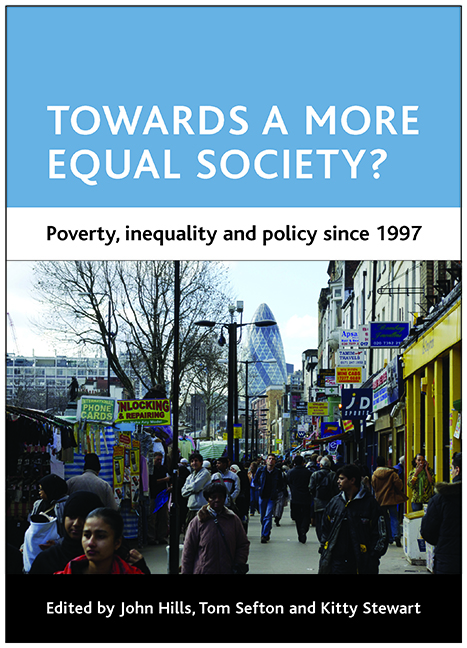six - New Labour and unequal neighbourhoods
Published online by Cambridge University Press: 22 January 2022
Summary
Introduction
When New Labour came to power in 1997, there was great enthusiasm within government for tackling deprivation, particularly area concentrations of problems. There were several important reasons. First, the growth of inequality during Thatcher's years had not been reversed (Chapter One). Second, social housing (still making up over a fifth of all homes) had become far poorer as a result of targeting access more systematically at the most deprived and vulnerable households. Third, levels of worklessness, benefit dependency and lone parenthood had all risen steeply and became more concentrated in the poorest areas, particularly in large council estates (Power and Tunstall, 1995). Overlaid on these problems were physical decay within older urban areas, lack of investment in infrastructure, high crime and evidence of a fast-growing gap between conditions in the poorest areas and the average. Repeated initiatives in the 1980s and 1990s in the poorest areas and efforts at estate renewal had not overcome problems of multiple disadvantage.
Area-based initiatives
With a strong commitment to reducing inequality and shrinking the gap between the poorest areas and the average, the new government pledged to improve the performance of public services in education, health, crime reduction and prevention, access to work, training and skills development. It carefully targeted programmes at the most disadvantaged areas, setting up Health and Education Action Zones, welfare-to-work programmes, and Drug and Youth Action Teams. It continued the Single Regeneration Budget, initiated by the Conservatives, focusing government reinvestment through local partnerships on many of the poorest areas. It also announced initiatives for literacy and numeracy hours in primary schools, anti-crime initiatives and a new regime of ‘Tsars’, such as ‘Drug Tsars’. It was not always clear what the multiple zones and the hyperactivity of overlapping initiatives would do or who was really responsible for them, but they seemed to respond to a need and generate an atmosphere of change. This chapter sets out findings from area-based research carried out by the Centre for Analysis of Social Exclusion (CASE) over the 10-year period from 1998 to 2008 alongside those from five major government-funded evaluations of area-based initiatives (Lupton, 2003; Power and Lupton, 2005; Power, 2007).
- Type
- Chapter
- Information
- Towards a More Equal Society?Poverty, Inequality and Policy since 1997, pp. 115 - 134Publisher: Bristol University PressPrint publication year: 2009

